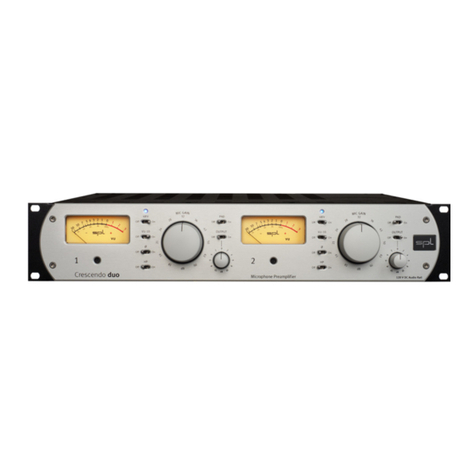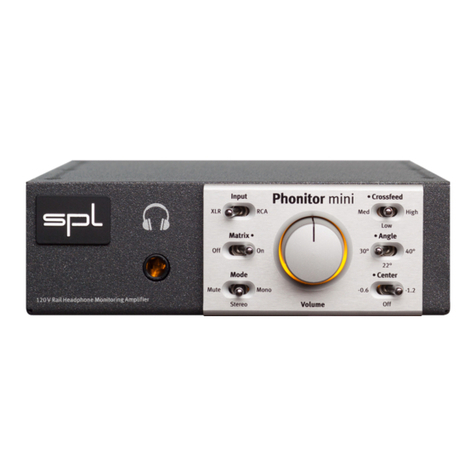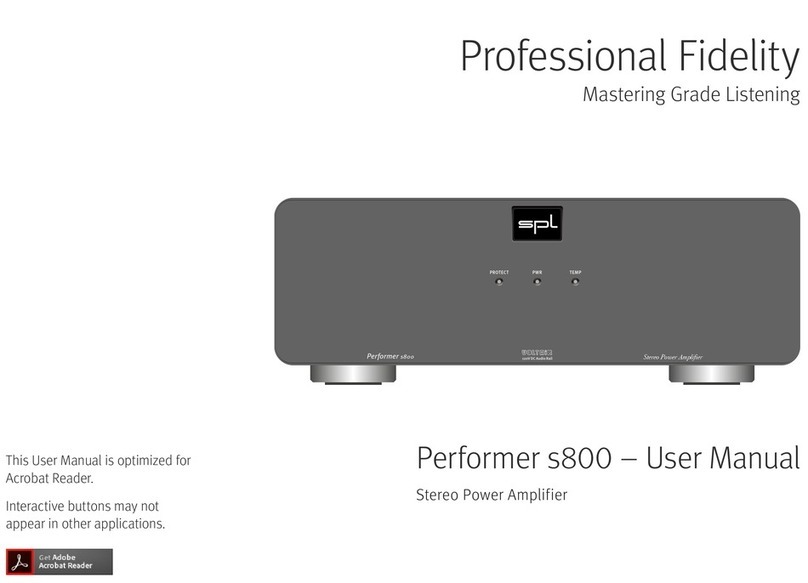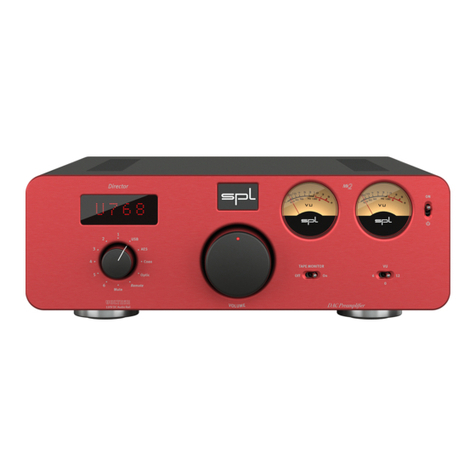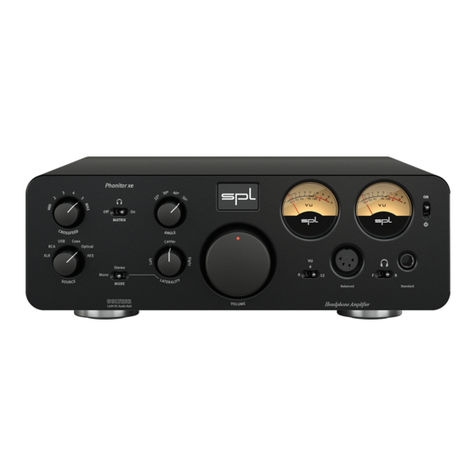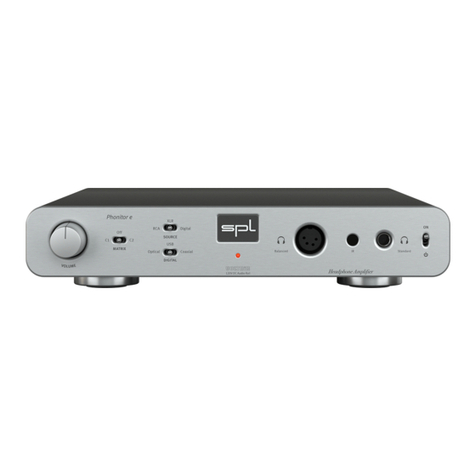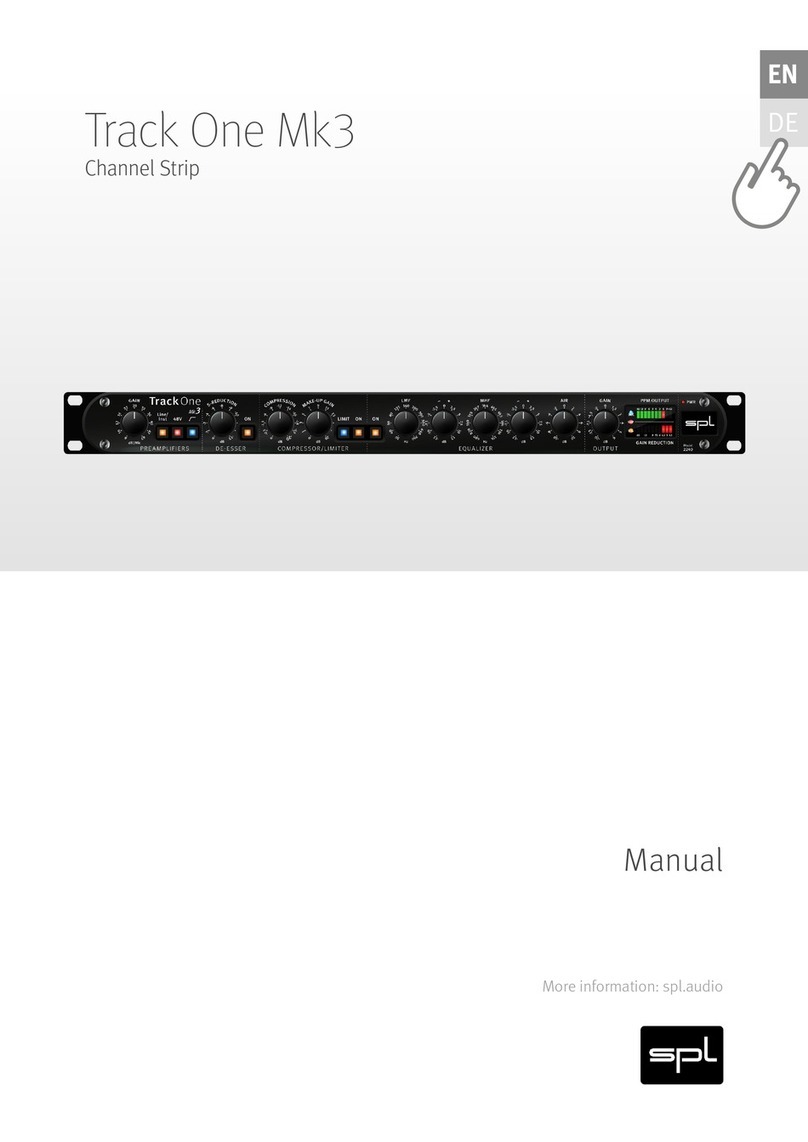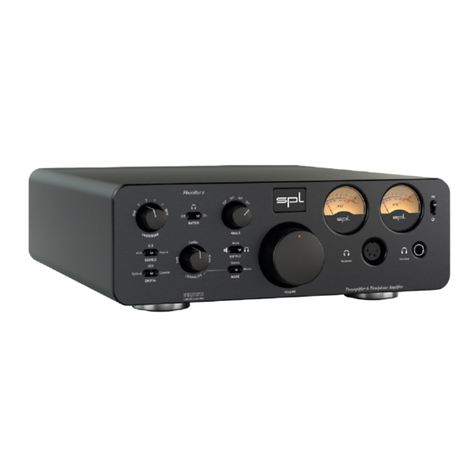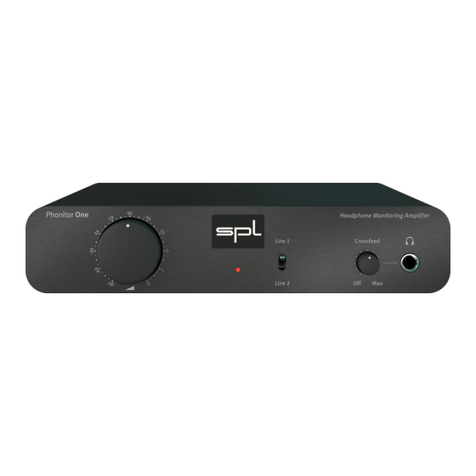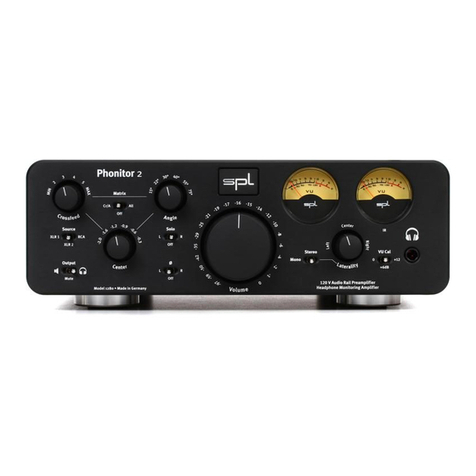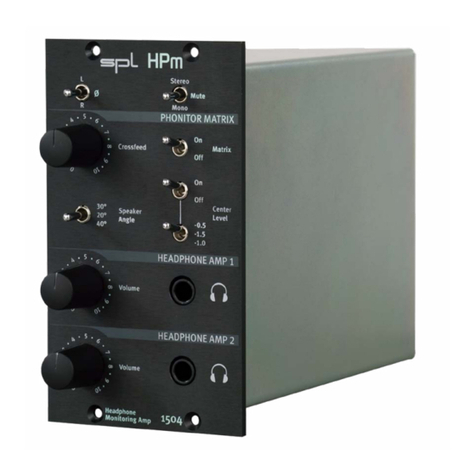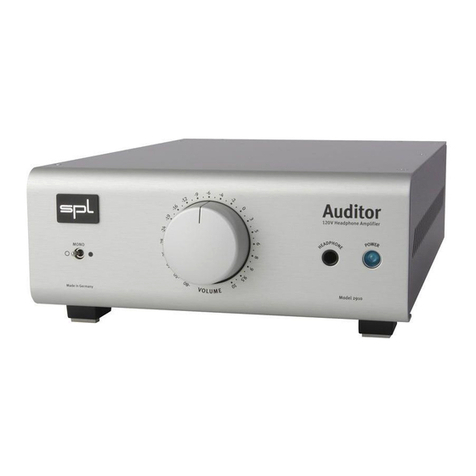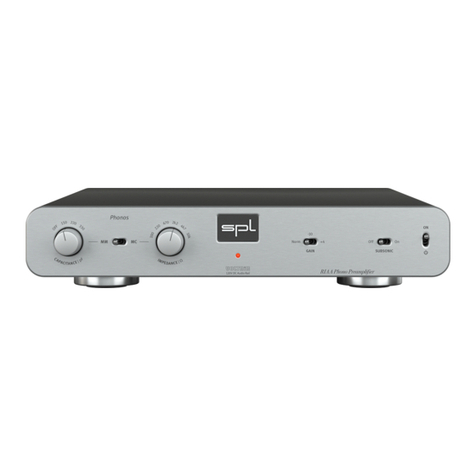
7
It makes good sense to think about where you place your
GainStation 8 Mk2 before connecting it. It should be posi-
tioned so that you can easily reach it, but there are other
considerations. Try not to place it near heat sources or in direct
sunlight, and avoid exposure to excessive vibrations, dust,
heat, cold or moisture. It should also be kept away from trans-
formers, motors, power amplifiers and digital processors.
IMPORTANT NOTE: When installing the GainStation 8 Mk2 in
a rack, please be sure to leave about a unit (1.5 to 2 inches)
of space above it to ensure sufficient circulation. If possible,
install the unit in a rack with other analog units to avoid
interference from digital units, such as clock frequencies.
We recommend covering the empty rack space above the
GainStation 8 Mk2 with a blind panel to reduce the amount of
dust and debris sucked into the unit by its fan. The fan side of
the housing must always be kept free.
IMPORTANT NOTE: Never disconnect the GainStation 8 Mk2
from its external power supply while the unit is switched on.
Always turn it off first and wait at least one minute, so that
all current can dissipate, before disconnecting the multipin
connector. Failure to do so can cause severe damage to compo-
nents.
In addition, please:
• Do not open the case. You may risk electric shock and
damage to your equipment.
• Leave repairs and maintenance to a qualified service techni-
cian. Should foreign objects fall inside the case, contact your
authorized dealer or support person.
• To avoid electric shock or fire hazards, do not expose your
unit to rain or moisture.
• In case of lightning, unplug the unit.
• Always unplug the cable by pulling on the plug only; never
pull on the cable.
• Never force a switch or knob.
• Use a soft, lint-free cloth to clean the case. Avoid cleaning
agents as they may damage the unit.
Before you begin
1180_BA_160905_E.indd 7 07.09.16 15:44

